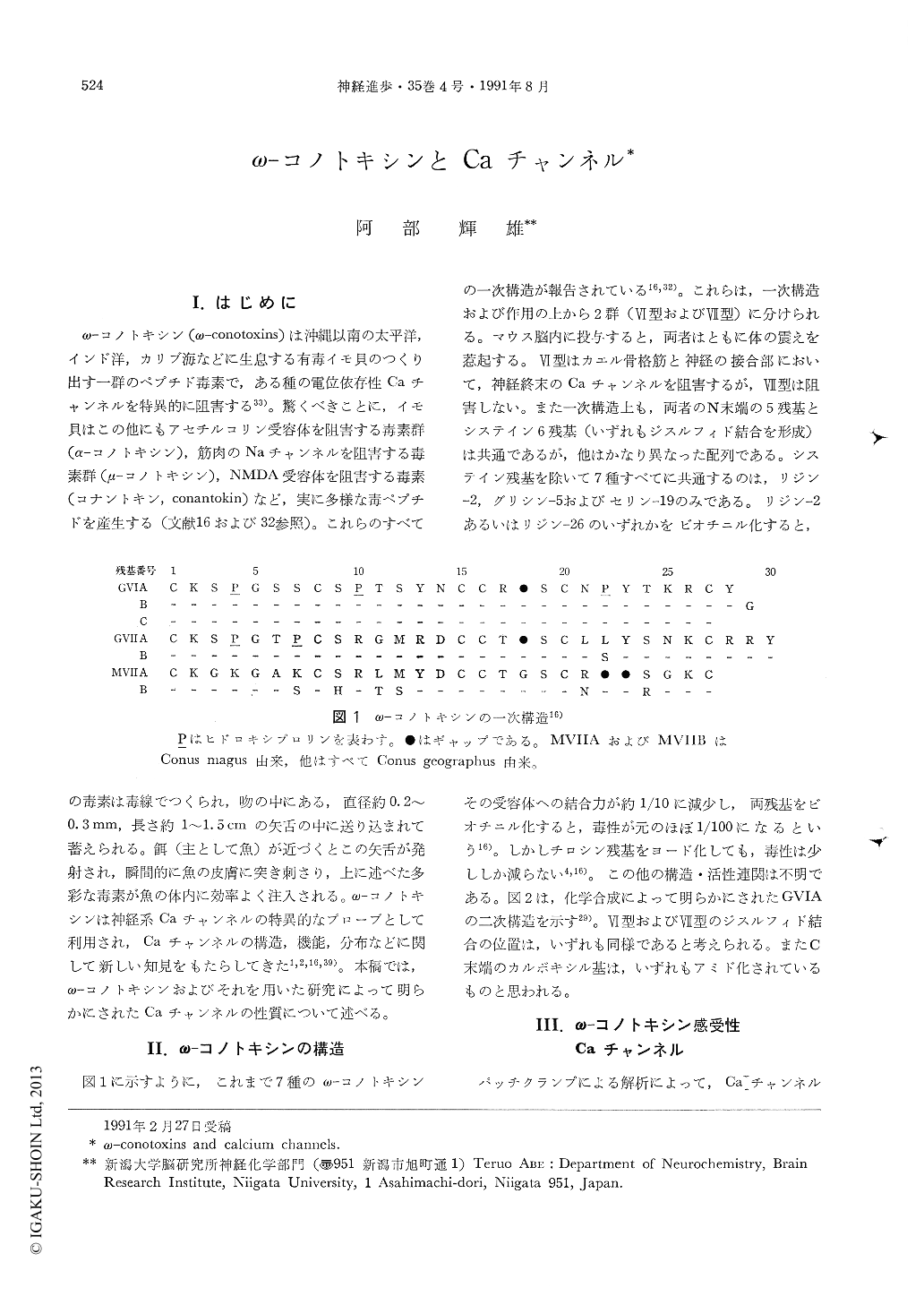Japanese
English
- 有料閲覧
- Abstract 文献概要
- 1ページ目 Look Inside
I.はじめに
ω-コノトキシン(ω-conotoxins)は沖縄以南の太平洋,インド洋,カリブ海などに生息する有毒イモ貝のつくり出す一群のペプチド毒素で,ある種の電位依存性Caチャンネルを特異的に阻害する33)。驚くべきことに,イモ貝はこの他にもアセチルコリン受容体を阻害する毒素群(α-コノトキシン),筋肉のNaチャンネルを阻害する毒素群(μ-コノトキシン),NMDA受容体を阻害する毒素(コナントキン,conantokin)など,実に多様な毒ペプチドを産生する(文献16および32参照)。これらのすべての毒素は毒線でつくられ,吻の中にある,直径約0.2~0.3mm,長さ約1~1.5cmの矢舌の中に送り込まれて蓄えられる。餌(主として魚)が近づくとこの矢舌が発射され,瞬間的に魚の皮膚に突き刺さり,上に述べた多彩な毒素が魚の体内に効率よく注入される。ω-コノトキシンは神経系Caチャンネルの特異的なプローブとして利用され,Caチャンネルの構造,機能,分布などに関して新しい知見をもたらしてきた1,2,16,39)。本稿では,ω-コノトキシンおよびそれを用いた研究によって明らかにされたCaチャンネルの性質について述べる。
Studies of voltage-sensitive calcium channels with a specific toxin, ω-conotoxin GVIA are briefly reviewed. The toxin blocks transmitter release at some but not all peripheral and central synapses. It was initially reported that the toxin inhibits both L-(dihydropyridine-sensitive) as well as N-types of calcium channels in the nervous system. However, very recent studies suggest that ω-conotoxin irreveisibly inhibits high-threshold neuronal calcium channels that are insensitive to dihydropyridines. Biochemical studies using radiolabeled toxin also suggest that the receptor for the toxin (constituent of calcium channels) is different from the dihydropyridine receptor in mammalian brain. Thus the toxin will be useful as a probe for investigations of calcium channel molecules involved in transmitter release.

Copyright © 1991, Igaku-Shoin Ltd. All rights reserved.


